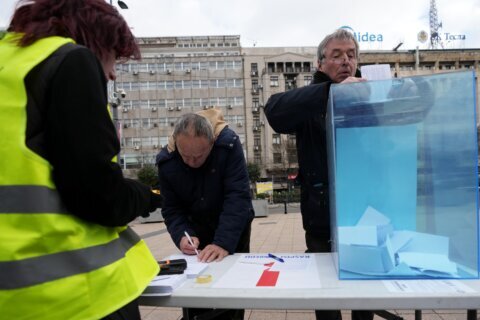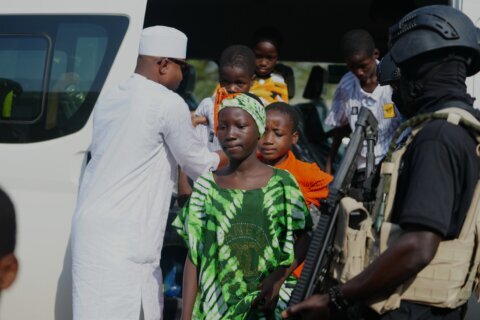The latest school shooting in Georgia once again puts the spotlight on what schools around the country are doing to keep out weapons and create safer learning environments.
Mac Hardy, director of operations at the National Association of School Resource Officers, said his organization is acutely aware of the challenge. The question, he said, is: “How do we secure the campus — how do we make it as safe as possible without creating a fortress?”
The answer, he said, is not a simple one.
Many school systems have either adopted or expanded their use of weapons detection technology. But Hardy said, “It’s not a cure-all.”
Hardy, who was a teacher before he went into law enforcement, said the technology behind weapons detection systems has evolved over the years. The older systems were labor intensive and didn’t lend themselves to school systems, some of which have high schools with upward of 3,000 students.
“Walking one-by-one through a metal detector — I’ve been in that environment and it’s not a fast process and it’s a chaotic process,” he told WTOP.
Aside from the cost of the systems, Hardy said keeping up with the changing technology has to be factored into a school system’s decision-making process.
“It’s just like buying a computer,” said Hardy.
Some systems can be continually updated, while others become outdated quickly.
Aside from the hardware and software in weapons detection systems, Hardy said school systems have to decide how to respond when a weapon or another banned item shows up on a scan.
“When we get a positive, or a false positive, how are we going to react to that? Who is reacting to that? What happens if that student does have a weapon and panics?” he asked.
The answers to all of those questions have to be formulated in advance, he said.
Even with the latest technology, students often try to sneak banned items — including weapons or vapes — past security.
“Doors get propped open, with rocks, sticks, with whatever they may find,” said Hardy.
That’s why he said school systems and local law enforcement departments can’t see weapons detection technology as a solution on its own.
Hardy said it is vital that school administrators, law enforcement and school staff work as a unit, and that in cases where schools have resource officers, those officers must work to build relationships with students.
Making sure that the right officers are selected to work in schools has to be a priority, he said.
“Just like a teacher, you’ve got to want to be in that environment,” he said. It’s not an easy environment to be in. Sometimes it can be frustrating, it can be taxing.”
“You have to have a person that is willing to work with others, willing to be approachable, willing to hear new ideas and willing to learn and continue to learn,” Hardy added.
Get breaking news and daily headlines delivered to your email inbox by signing up here.
© 2024 WTOP. All Rights Reserved. This website is not intended for users located within the European Economic Area.








